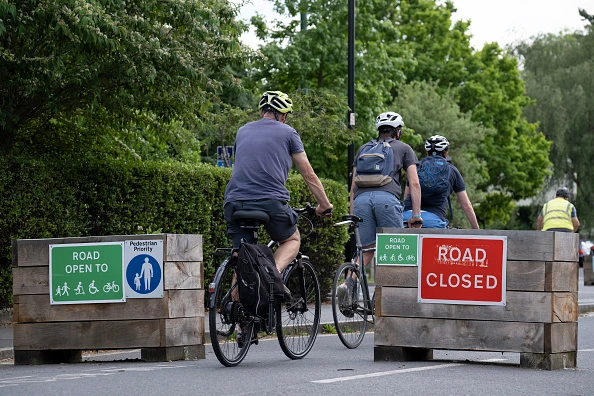
When talking about low-traffic neighbourhoods (LTNs), London is at the forefront, with Transport for London stating, “LTNs offer a cost-effective way of delivering safe and attractive streets for walking and cycling by preventing through traffic from using residential neighbourhoods to avoid main roads (often known as ‘rat running‘), while retaining local access for residents and visitors,” TfL said.
Now, a new study published in the journal Transport Findings, found that once a neighbourhood in Lambeth transformed into a low-traffic area, residents residing there began to reduce their frequency of driving compared with those living in the neighbouring regions.
“This new research linked data for four LTNs in Lambeth to MOTs for an accurate assessment of how much people are driving. The 6% reduction it finds in driving is surprising in that this is a large reduction compared with other interventions or what we might expect, said study co-author Dr Anthony Laverty, from the School of Public Health at Imperial.

However, earlier this year, “thousands” descended on Oxford to protest low-traffic neighbourhoods (LTNs) being implemented in the city as the initiative moved beyond the UK capital. (Though there seemed to be a combination of those against low-traffic neighbourhoods (LTNs) and those marching against the notion of a 15-minute city.) But why all the fuss?
What is a low-traffic neighbourhood?
A low-traffic neighbourhood (LTN) is, quite simply, a residential area designed to reduce traffic and make the streets safer. Something many have argued for in congested cities such as London.
Low-traffic neighbourhoods (LTNs) typically involve a combination of road closures, speed limit reductions, and other traffic-calming measures to reduce traffic speeds and volumes. There is often some disruption as construction work is required, but the long-term benefits are meant to outweigh short-term disruption.
After all, the aims of low-traffic neighbourhoods (LTNs) are to increase the quality of life for the local residents, improve air quality and create a greener, more sustainable community. As well as a safer one, of course, as getting the number of vehicles on streets and roads lower should yield fewer accidents. The police have also issued statements to say they believe a low-traffic neighbourhood (LTN) can reduce crime.
This should all, in theory, create a pleasant and inviting environment for pedestrians, cyclists and other non-motorised vehicle users, and a general shift to more sustainable modes of transport. low-traffic neighbourhoods (LTNs) should ideally be integrated with public transport networks and other sustainable travel options.
However, designs usually include adequate parking and loading areas, and encourage a mix of land use, in general, so as not to fully cut communities off or create counterintuitive planning decisions.
They are comparable to the 2016 superblocks initiative used to best effect in Barcelona, where traffic within a group of city blocks was designated to particular travel routes to improve local areas. The scheme has been deemed a success by many.
However, some still don’t care for the initiative.
Why are people protesting low-traffic neighbourhoods?
Despite all the proposed benefits of low-traffic neighbourhoods (LTNs) and recent study findings, many believe they simply don’t work. The majority of protesters aren’t against safer streets and better air quality, they argue that the traffic is simply rerouted.
This would extend commute times for many, delay deliveries or make ride-hailing services such as Uber or taxis more expensive as journey times increase.
Controversially, some in the protests in Oxford, and indeed other cities with proposed low-traffic neighbourhoods (LTNs) such as Bristol, have started to believe in conspiracy theories regarding LTNs. There is a belief that low-traffic neighbourhoods (LTNs) are somehow a version of government control and are linked to climate change deniers. So far, there is no evidence to support this.
Specifically, Oxford saw far-right activists and other extremist groups boycotting local issues like low-traffic neighbourhoods (LTNs) by assuming that these schemes are dangerous and are aimed to control people. The Guardian reported that opponents have vandalised low-traffic neighbourhoods (LTNs) signs making them illegible. The far-right group Patriotic Alternative also participated in a march in February 2023 against 15-minute cities and low-traffic neighbourhoods (LTNs), claiming they enforce a Hunger Games-like mindset among people.
Nick Lowles, HnH’s chief executive, said: “The majority of people campaigning against traffic measures don’t step into harmful territory. However, the far right and their conspiracy theorist fellow travellers in this space base their arguments on fundamentally antisemitic ideas of shadowy global elites controlling things from afar.”
[Read more: Ban cars: Why cities are embracing the call for car-free streets]






